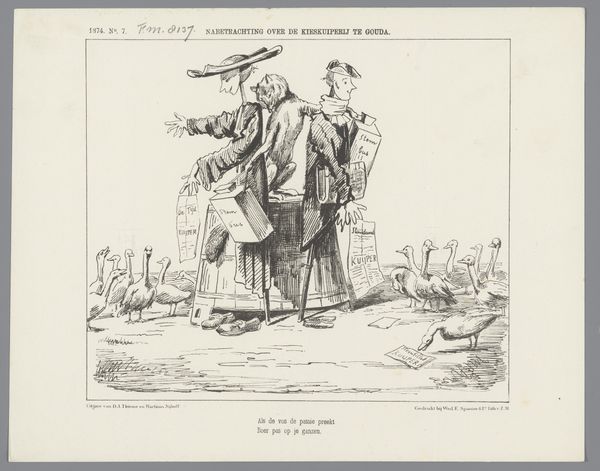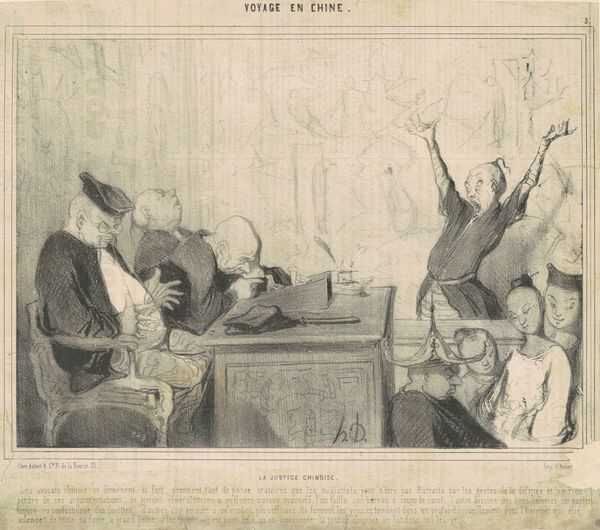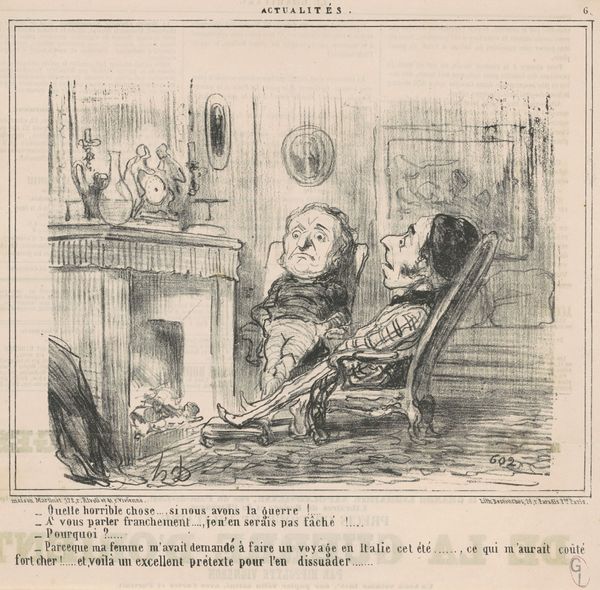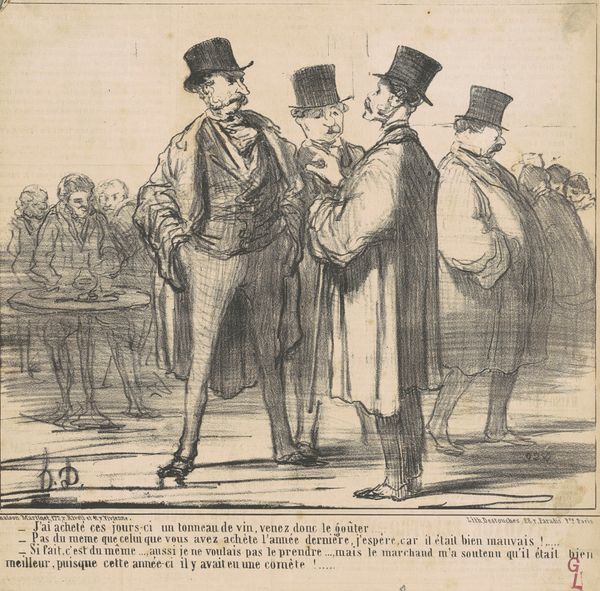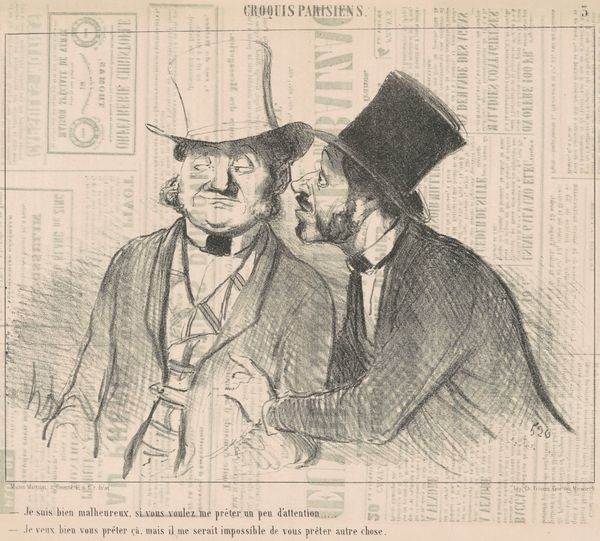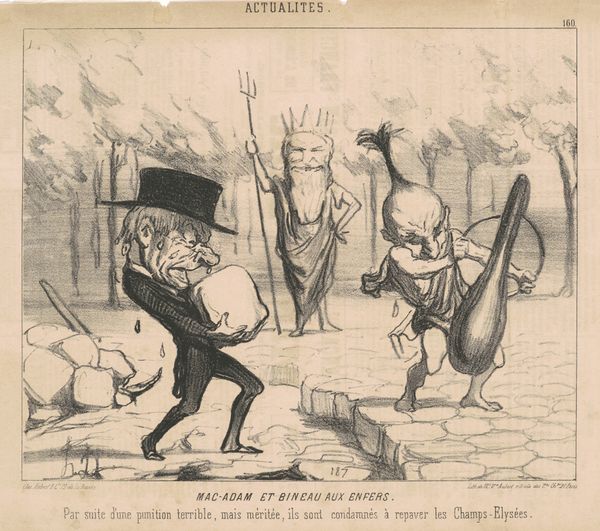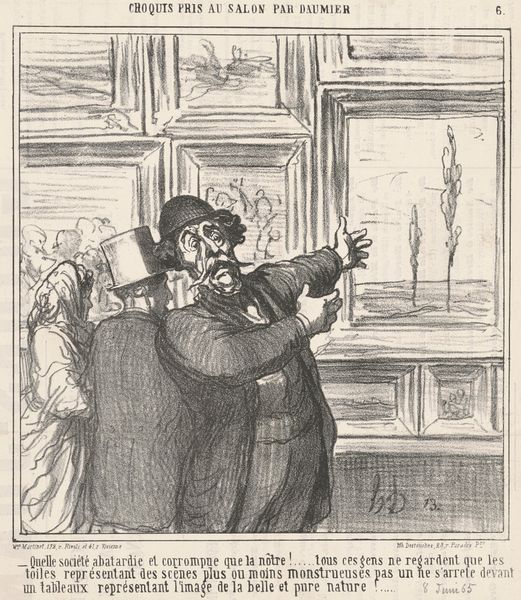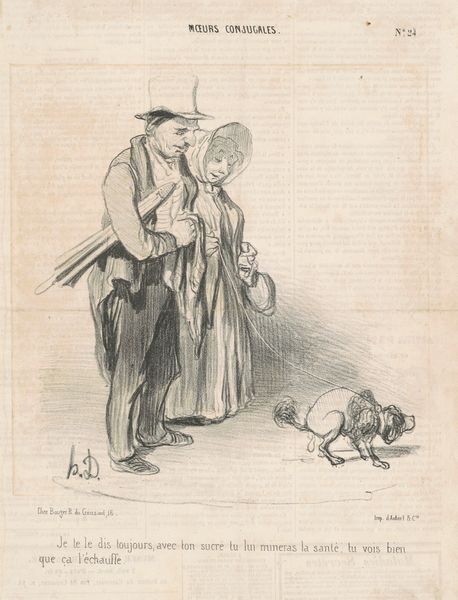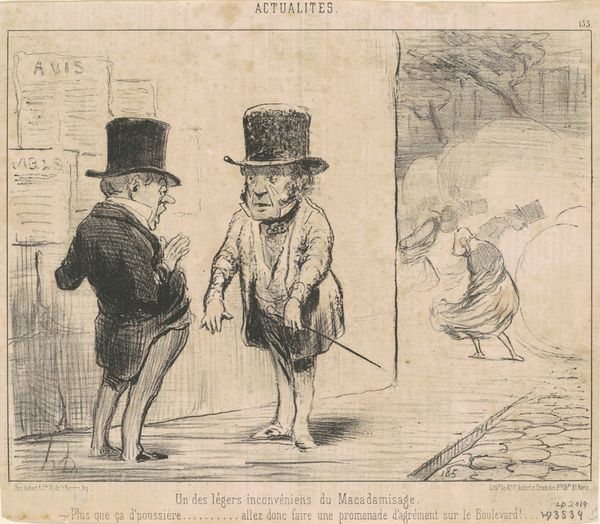
drawing, lithograph, print, ink, graphite
#
drawing
#
lithograph
# print
#
caricature
#
figuration
#
ink
#
romanticism
#
graphite
Copyright: National Gallery of Art: CC0 1.0
Here we see a lithograph by Honoré Daumier, a printmaking process where an image is drawn on a flat stone and then transferred to paper. The stark black lines and tonal variations we see were achieved through Daumier’s mastery of this technique, using greasy crayons and washes to capture a range of textures and shadows. Lithography allowed for relatively quick and inexpensive reproduction, making it an ideal medium for political satire during the 19th century. It democratized image-making, allowing artists like Daumier to reach a broad audience with biting social commentary. The image shows two figures mourning at a gravesite, representing disillusionment with the failed promise of the French Second Republic. This was part of a wider trend of using the industrial method to express the daily life and political landscape in France. Looking closely at the marks and textures reveals the hand of the artist, but also the industrial processes that made this image widely accessible. The combination of skilled craftsmanship and industrial production underscores the complex relationship between art, labor, and politics in 19th-century France.
Comments
No comments
Be the first to comment and join the conversation on the ultimate creative platform.

